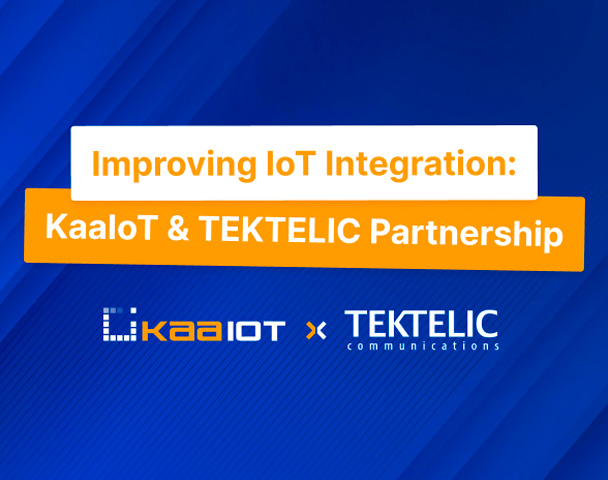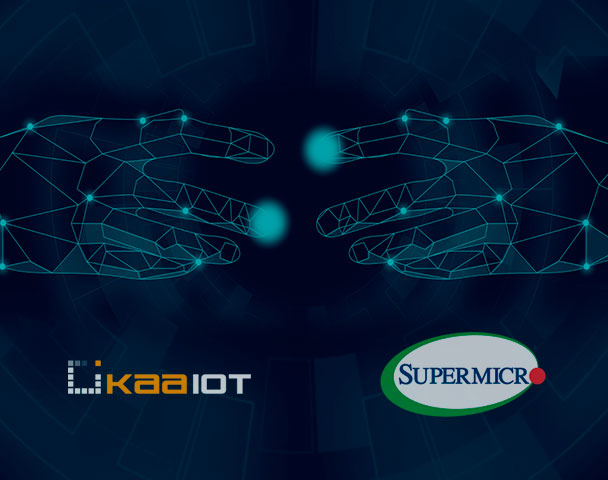Identity and Access Management: Security in the IoT
The security of your company’s data is the most important concept you can think about today, yet despite public awareness about the importance of protecting the information you work with by controlling user access, the IoT device security policies of many teams leave much to be desired. We are bombarded with data in exponentially increasing amounts on a daily basis, and filtering, analyzing, and storing all of it securely can be difficult for anyone, especially for larger scaled enterprises. When we add to this probe, the complexity of controlling multiple devices via the Internet of Things (IoT), combined with identity and access management architecture, the challenge becomes all the more apparent.
Bad faith actors, scammers, hackers, and other disreputable characters, are all IoT security risks, seeking to abuse user access policies to gain access to your company’s data. But do not be too alarmed, however, as there are IoT security solutions out there that will prevent this. Adopting identity and access management architecture for your business ensures that you can rest easy, knowing that the security of your project is assured.
IoT and access security issues in 2022
-
Non-centralized user access policies
-
Lack of transparency on access to resources, devices, and endpoints
-
Gaps in communication between companies and clients
-
Manual customization of access policies for users
-
Admins have to set up systems repeatedly or hire external teams
-
Market solutions don’t handle authorization & authentication for required assets/groups
IoT Security Concerns
It is important to remember the essentials of what exactly IoT is, so as to ensure a full understanding of the resulting IoT security risks. IoT is an ecosystem where billions of smart devices around the world are linked with one another to share and analyze various forms of data. This is achieved via IoT remote device access, where if a device is able to be connected to the internet via user access it can join this system, meaning that everything from your alarm clock to toaster, to your smartphone and your PC computer, are all part of IoT.
This has remarkable transformative value and has allowed companies to create new forms of business and significantly improve their own practices via IoT remote device access. The inter-connectivity of IoT allows you to make decisions quicker, based on real-time analysis, respond to changing circumstances rapidly, and streamline your operations with remarkable efficiency and improved user access. Unfortunately, due to the connectivity, indeed the complexity, of IoT, with more devices connected than ever before, gaps can emerge that create IoT security risks.
The IoT security challenges that companies can face are numerous but there are a few that stand out more prominently. The following list is not exhaustive, but these problems are among the most commonly encountered IoT security issues.
-
1Improper Access Control: This is perhaps the most important issue to understand as it represents your greatest vulnerability due to poor user access control. IoT services should only be accessible to the owner and responsible persons (ie employees). If this is improperly enforced, i.e. continued use of pre-set passwords like (secret1234) it poses a real IoT device security risk.
-
2Poor Manufacturer Compliance: Given the explosive growth of IoT it’s perhaps unsurprising that manufacturers will cut corners to meet market demand quicker. This can mean they not just provide poor quality passwords, but also devices with poor quality IoT remote device access. Hardware issues, not having the ability to update properly, insecure data storage, all combine to make any IoT system the device in question joins more likely to experience IoT security risks.
-
3Poor Knowledge: As IoT is a relative novelty there is still a great degree of ignorance about how to properly secure IoT cyber security, even at tech companies. A lack of knowledge about the functionality of the concept leaves users more exposed to phishing and hacking attempts and makes them less likely to recognize problems when they occur. Social engineering attacks, where criminals target humans, not devices, to exploit their ignorance, hoping to force an error, also present a major threat to IoT security best practices.
Kaa IAM holds the keys to your business's digital transformation, taking care of the stability and security of your enterprise. But that’s not all. Kaa offers a number of products and services for enterprises of all sizes.
-
Kaa IoT Platform: Our flagship project, an end-to-end IoT platform for enterprises.
-
Kaa Cloud - An alternative to our standard platform for SaaS businesses that makes management, tracking, analytics and data storage simple.
-
Kaa IoT Gateway - A highly configurable, industrial-grade gateway that you can customize for anything from Smart Home and Smart Healthcare to Automotive, Telecom, and Industry 4.0.
IoT User Access Challenges at Larger Enterprises
All of these problems outlined above can coalesce into one main issue; User access challenges. This is particularly true for larger-scale enterprises as, by their very nature, they require a large number of people to achieve IoT remote device access properly. This problem is compounded by the effect of the COVID-19 pandemic and the resulting explosion in working from home, which created a huge number of IoT security concerns.
Then there’s the issue of integration which is proving to be difficult for many companies, even if they recognize the importance of IoT network security. According to one study, up to 50% of companies in both North America and in Europe are struggling to properly integrate IoT. The lack of knowledge to achieve this is often encountered amongst IoT security challenges, as an improperly integrated identity and access management architecture is inherently vulnerable to IoT security risks.
So if you are a large-scale enterprise that understands the importance of IoT, but you face IoT security challenges, especially with properly controlling user access, what can you do? Properly understanding the integration process is a good start, but that won’t provide total security. The solution is to invest in property access controls, a streamlined system that will help you minimize security breaches.
Improve IoT Security via Granular User Access Control
The best way to ensure your IoT project is properly protected is to set up advanced granular permission control on every organization, entity, and asset level in your IoT platform security, thus providing complete control over the chinks in your IT defenses. The granular aspect of this concept refers to the process of granting different levels of user access to a particular resource to a particular user. This contrasts with what is known as course grain access, which is where users have single access to multiple resources in one single IT system.
In order to be able to adopt this level of granular user access control over your IoT system, you need to create an identity and access management architecture that provides the highest level of IoT security best practices possible. Identity access management (IAM), a means by which companies and individuals can deploy applications and data with far greater protection than previously possible, is essential for those who want to achieve IoT security best practices. A crucial part of this concept, particularly when considering how to address IoT security concerns, is the authorization and authentication process, as it’s the bedrock of creating granular access control.
IAM, Authentication & Authorization
IAM consists of three major elements following the ‘triple A’ format: Authentication (identity management), authorization (access management), and accounting (audit), all of which combine to offer the maximum level of IoT platform security required for identity and access management architecture. Authentication describes the device identification process, which ensures that only verified and trusted devices can be linked for user access, and authorization then provides permissions for individuals or devices. When combined with accounting, which oversees both processes and acts as a failsafe, you are able to perform role-based access control and all but eliminate IoT security issues.
The trick, as it were, is to use a system that is able to perform ‘triple A’ gold-standard format proficiently while allowing a degree of flexibility, to ensure that your IoT authentication processes are adaptable to your company’s specific needs. This is a major pain point many large enterprises currently experience as most identity and access management tools for IoT authentication come as a pre-packaged system that cannot be fully customized. The authentication/authorization process should not be laborious and should be designed in such a way that it reduces the security boilerplate for IAM integration.
That’s why we developed Kaa Identity and Access Management (Kaa IAM), to create the IAM system we knew would eliminate IoT security risks for large-scale enterprises with the level of customization they required.
How to Use Kaa IAM
Using Kaa IAM is simple and while it was originally designed for large-scale enterprises we’ve designed it to be readily deployable at any company of any size. It supports integrated authentication/authorization, and both comprehensive resources access and user management. You can also apply user permission presets and run your product across multiple apps at the same time.
It’s easy to launch Kaa IAM and you start with adding new users;
-
Specify the username and email. Enter a simple password and specify the user directory as /alpha. You use this user directory to specify a policy that belongs to this user group only.
You can also set permissions via the following steps:
-
Go to User management - Policies, and create a new Policy - e.g. manage-alpha-organization
-
Then go to Statements to specify action levels manually, like the read, create, then update access.
-
If you want to go into deeper editing you can go to a json resource, copy, and specify with the /* (asterisk). This will grant permissions to all the users of your group and their groups as well.
The Takeaway
Kaa IAM provides everything you need to ensure that IoT security best practices become part of your identity and access management architecture. It provides integration APIs, supports arbitrary 3rd party app integrations by providing a common language (Kaa Resource Names, Actions, and configurable access control policies), and utilizes a high-level fine-grained authorization functionality designed for our IoT platform security. If you have been looking for IoT security solutions that address the specific needs of your company, something designed just for you, then this is it.
Kaa IAM is an independent IAM SaaS product that can be used within your company’s unique enterprise software landscape and IoT network security, and can even be used to add value-added IAM services for your own clients. With this level of flexibility, you are able to focus on your own operations and don’t have to worry about IoT security challenges, data leaks, or hacking attempts. So if you want to address the IoT security risks your company may be experiencing, make sure you get into contact with us today.




